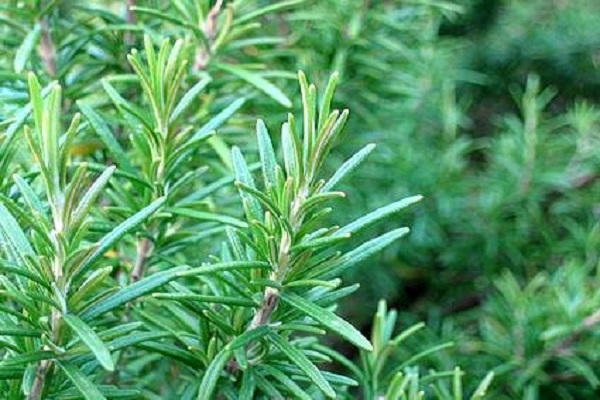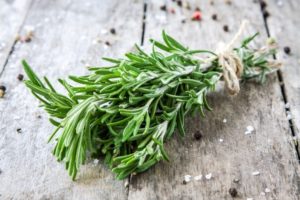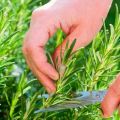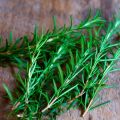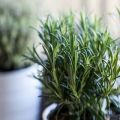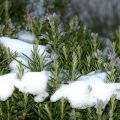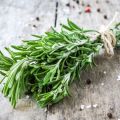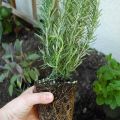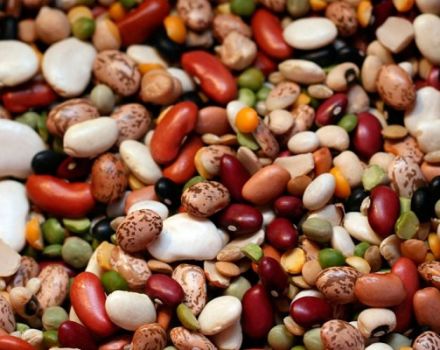Types and varieties of rosemary with names, cultivation and care
The healing qualities of an evergreen perennial, its aroma have been appreciated since ancient times. Depending on the varieties of rosemary, the aroma of eucalyptus, camphor is mixed with notes of lemon, pine, tenderness of the sea. Grass bushes are found naturally, on the Mediterranean coast, in the nearby mountains and forests. The plant is valued and grown for the sake of decorative flowers, but more for the use of spices for food and for medicinal purposes.
Plant characteristic
The evergreen perennial rosemary is translated from Latin as sea dew, the plant is a representative of the Yasnotkov family. Erect shoots of grass reach a height of 0.5 to 2 meters. They are densely leafy. The linear leaves of the leathery type are 1.5-3 centimeters long. The plates are narrow with curved edges. Above, needle-like leaves are shiny, green, dark or light in tone, and pubescent below. Foliage is located on dark gray shoots opposite.
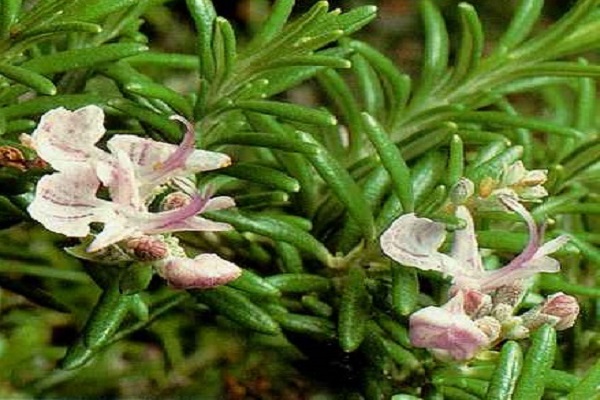
In the active period of life, the bushes are covered with small flowers, collected in dense panicles of purple, less often white. In the second half of summer, the plant gives seeds, small, brown in color.
The main biological qualities of a spicy culture include:
- drought resistance;
- exactingness to light;
- hypersensitivity to low temperatures;
- resistance to diseases and pests.
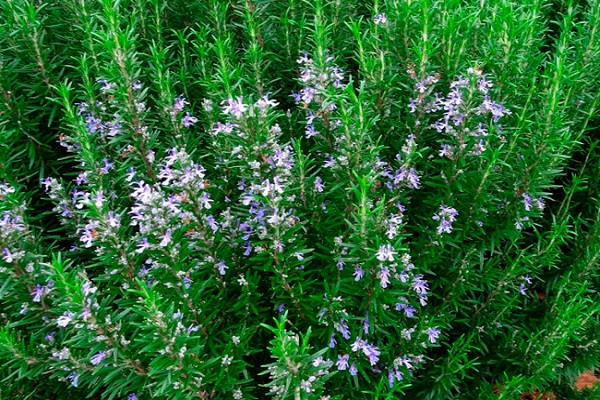
Although rosemary preferentially grows on permeable soils, it also withstands dry sandy, gravelly soils. Bushes are planted on slopes for landscaping and soil consolidation.
The flowering of an ornamental perennial lasts 3-4 weeks, starting in April. The seeds can be harvested in late summer.
Rosemary is used on the weed-free southern slopes of the garden. During the growing season, he needs feeding. From the second year of life, plantings of fragrant spices are fed in the fall with superphosphate, and in the spring with ammonium sulfate at the site of the root system of the culture.
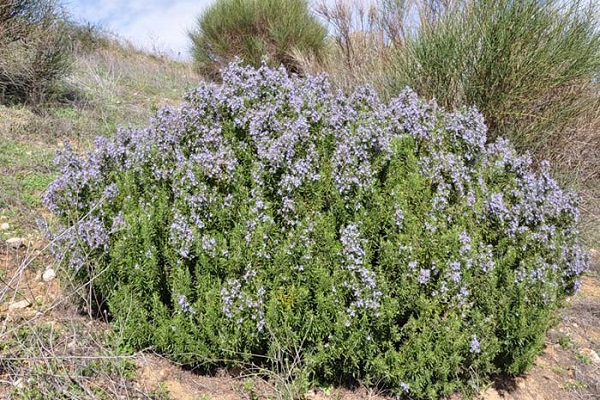
Harvested spicy herbs in July-August, when the plantation turns 3-4 years old... Essential oil is extracted from shoots and leaves. The collected leaves are dried in the shade under a canopy and added to drinks and dishes. The grass can be kept dry for 3 years.
Useful properties of the plant
The leaves and tops of flowering shoots of the shrub contain essential oil, which is part of medicines. Consisting of pinene, camphene, cineole, camphor and other substances, it is used for the manufacture of perfumery, alcoholic beverages.
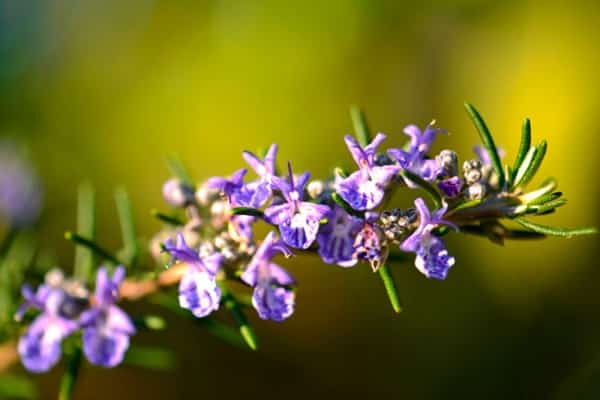
An infusion of perennial leaves helps to cope with:
- headaches;
- colds;
- dysfunction of the gallbladder;
- spasms in the intestines;
- lack of milk in nursing mothers;
- neuralgic and rheumatic pains.
The herb is added to smoking mixtures to eliminate asthma attacks. External use of the leaf infusion is necessary to combat inflammation of the mouth and throat, boils, acne. The solution is added to baths for neuritis, inflammation of the genital tract in women and men.
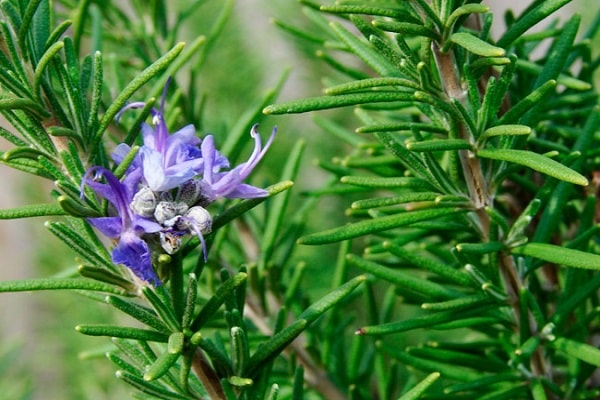
In cosmetology, herbs are used to improve the condition of the skin and hair. It is effective for baldness.
As part of spicy compositions, the plant is necessary in order to flavor poultry dishes, sauces. Add herb to tea.
Types of rosemary
In natural conditions, there are several varieties of evergreen perennial. But two types are used in indoor floriculture and in gardening: medicinal, or ordinary, rosemary and prostrate.
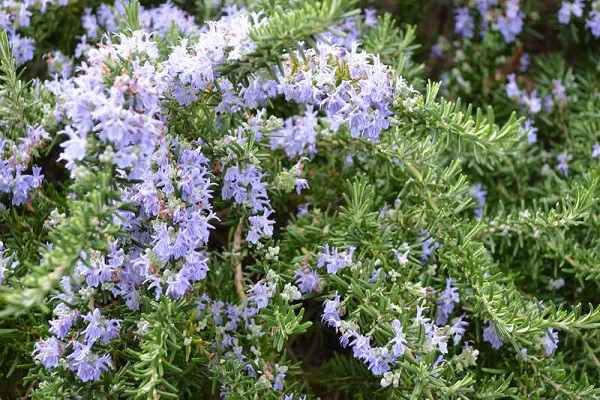
Medicinal rosemary
This herb is the most common. Erect bushes, reaching a height of 1.5-2 meters, with dense narrow leaves are found in gardens, in pots on windowsills. Grow rosemary ordinary, or medicinal, for consumption as a spice. Its leaves and shoots are valuable because they are used in folk remedies for the treatment of diseases. And the essential oil released from parts of the plant perfectly tones up, helping to prolong youth, to recover from illness.
A medicinal herb is used as a decorative design for summer cottages and gardens. The bushes are covered in spring with panicles of blue, purple, pink and white inflorescences. The specific aroma of plants attracts beneficial insects.
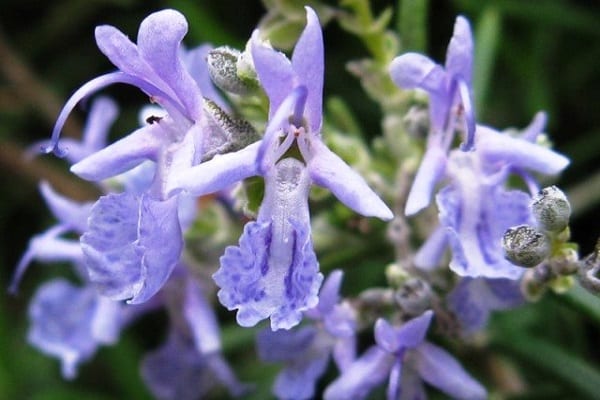
Rosemary open
You can meet a sprawling shrub with a spherical crown in the southern regions. Shoots no more than 70 centimeters in length grow so that they extend 1.5-2 meters. Thin as needles, the leaves of this species tend to change color from light green in spring to bluish in autumn.
Due to its ability to grow, the shrub is used to create a hedge or designate zones on the territory of a country house.

Rosemary varieties
Breeders have developed new varieties of rosemary perennials that decorate gardens and homes. Outwardly, you cannot immediately distinguish one variety from another, but they still differ in the area of the leaf plate, its color, shape and shades of colors. Most of the varieties are medicinal rosemary.

Rosemary Corsican Blue
The evergreen perennial Corsican Blue has a powerful root system that penetrates 3-4 meters deep. The opposite leaves are gray-green. Small blue flowers are collected in dense panicles. The flowering of the variety begins in late April - early May and continues for 20 days.
This plant variety is used for medicinal purposes. It is planted in flower beds, borders are drawn up. A shrub is suitable for securing the slopes of the reservoir. It is preferable to plant the plant on sandy, gravelly soils. The perennial is afraid of areas with acidic and swampy soil.
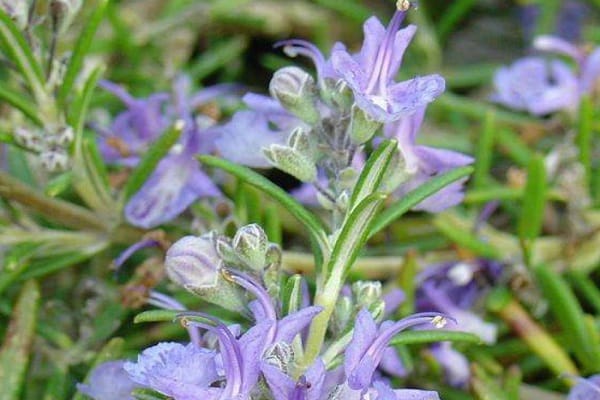
Rosemary Blue Winter
The ornamental shrub variety is prized for its blue-green needle-like leaves. The plant is winter-hardy, tolerating frosts down to minus 17 degrees. Rosemary is actively used for fragrant gardens, where lemon balm, chamomile, and mint grow together with spice. You can apply gray-green shoots with purple flowers in the form of single compositions on the lawn. Perennial serves as a background for bushes of roses, peonies.
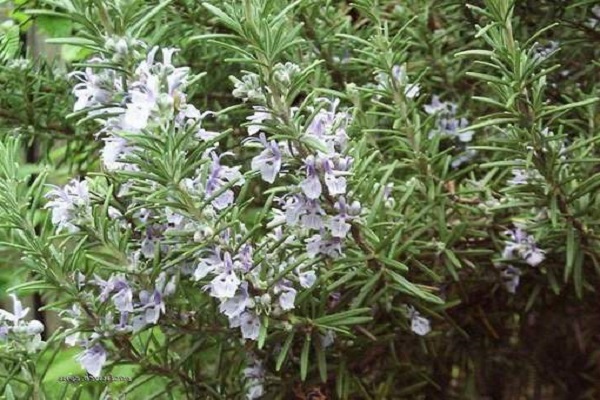
Rosemary Crimean
Back in the 19th century, workers in the Nikitsky Garden of the Crimean Peninsula began to cultivate rosemary. The dwarf shrub begins to bloom in February. At this time, the leaves and tops of the shoots are harvested. The plant is about 1 meter high and covered with leathery leaves in the form of needles of gray-green color.They exude an incomparable aroma that combines the smells of the sea, freshness, lavender.
In Crimea, you can find rosemary bushes on rocky slopes, in the design of rabatki, borders. For medicinal purposes, rosemary plantations are set up, located in the sunny places of the peninsula.
The variety is afraid of even a slight drop in temperature, so for the winter it is better to bring fragrant bushes into the room.

Rosemary Tenderness
The decorative flowering perennial has thin leaf needles up to 3-4 centimeters long. By autumn, the green color of the leaves is transformed into a gray-blue. The plant variety has brushes of blue, delicate flowers in April.
Shoots grow successfully in the garden, but in regions with cold winters, the conditions of an apartment or house are suitable for them. The herbaceous crop loves sunny places with good fresh air ventilation.
For growing crops in containers, ceramic vases filled with nutritious soil are chosen... The acidity of the soil should be neutral or slightly alkaline.
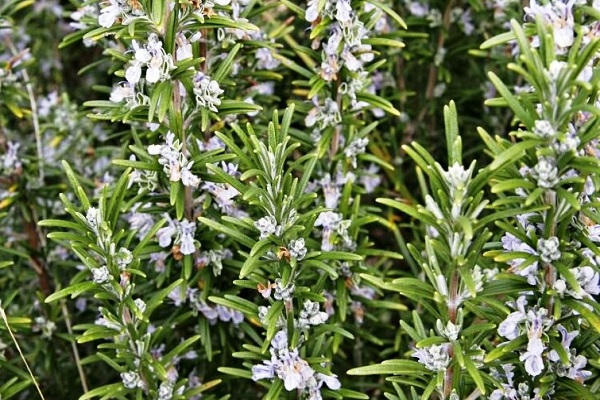
Rosemary Rosinka
The perennial variety belongs to the medicinal species of the spice plant. Reaches technical maturity 63-65 days after germination. The shoots of the plant are densely covered with foliage, the height of the stems reaches no more than 40 centimeters. Leaves with a high content of essential oils are dark green in color, linear-lanceolate.
Suitable for growing in pots. The total weight of green mass reaches 50 grams from one bush.
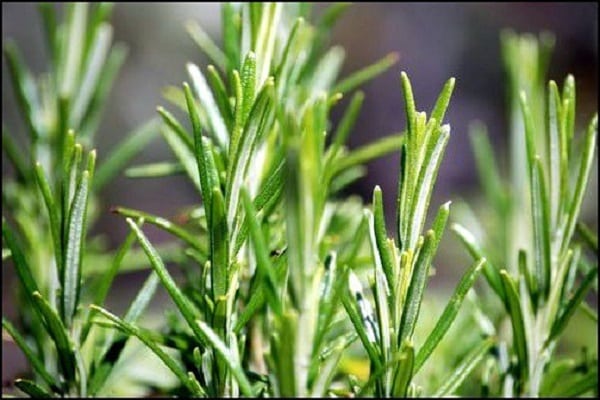
Rosemary White
A rare plant with white inflorescences. During the growing season, a flowering half-shrub with a height of 0.5 to 1 meter can become a real decoration of the garden. Shades the beauty of perennial, its snow-white inflorescences bright green of needle-like leaves. The variety belongs to medicinal rosemary. Its leaves and shoots are infused and used to increase vitality and strength.

Rosemary Ampelny
The widespread form of flowering shrub is represented by Ampel perennial. Plant shoots grown in containers curl, hanging fancifully along the wall from the pot. You can use the waterfall of twisting branches covered with green long and narrow leaves to create a "living" wall. Will decorate the ampelous view of rosemary and rocky gardens.
Since the variety does not tolerate even small frosts, it is better to grow it indoors.
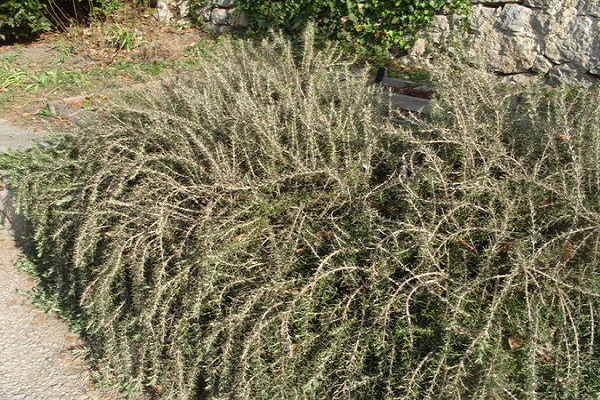
Rosemary Biryusa
The dense leafy shoots of evergreen shrubs will become a true decoration of the garden and home. A perennial shrub will always retain the freshness of its leaves, glossy, with curled edges. Honey-bearing inflorescences on erect shoots appear in March, again in September. Small flowers are located in the axils of the upper leaves and have a color range from light blue to purple.
A feature of the variety is its resistance to drought, sensitivity to low temperatures. It is better to grow the plant in tubs, bringing it into a cool and bright room for the winter.
